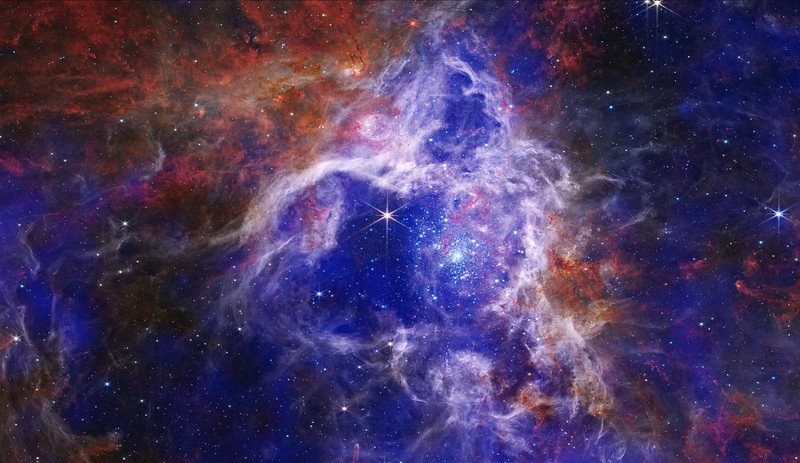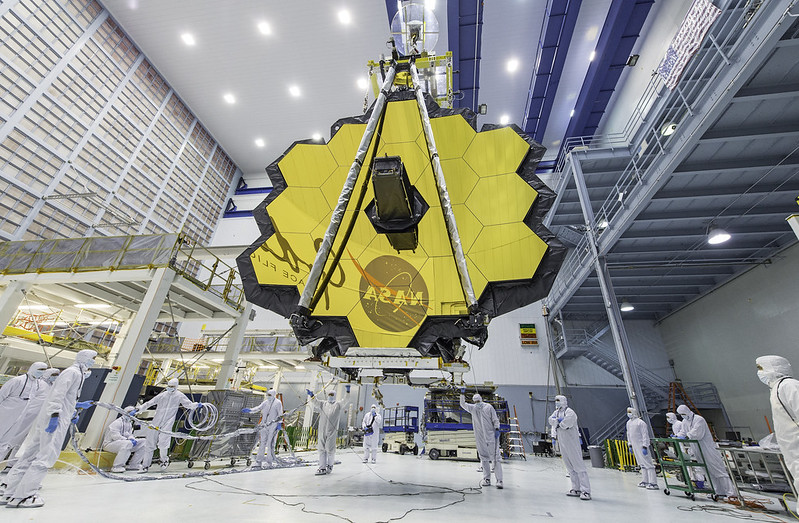Engineering the James Webb Space Telescope (JWST) - the largest optical telescope in space
In a seminar at Queen Mary, NASA’s Dr Raymond Ohl explained what makes the JWST’s architecture so unique.
.jpg)
The full-scale James Webb Space Telescope model at South by Southwest in Austin
Dr Ohl has worked on the James Webb Space Telescope (JWST) project at the Goddard Space Flight Center in various roles for about 20 years. He was invited by Dr Stoyan Smoukov, Professor of Chemical Engineering at Queen Mary to talk to students and academics about its construction and current status.
‘We are living in a golden age for space exploration,’ Dr Ohl said. ‘If you look at the history of science, you can say that we're learning a lot more per unit time about the Earth and our universe than we have at any other time in history.’
The James Webb telescope has played a role in that. ‘JWST was created to allow us to sample light from the first generation of stars and galaxies that formed up after the Big Bang. The telescopes that existed before JWST could see into the distant past, but not that first generation of stars. We needed a telescope that can look into the infrared.’

The Enduring Stellar Lifecycle in 30 Doradus (Composite: Infrared + X-ray) - Photo credit: NASA
Having set this historical, intergalactic scene, Dr Ohl – an optical engineer – then gave us a detailed description of the amazing engineering of the JWST.
Distance played a big part in its construction, and so to be able to see distant stars and galaxies, the eye had to be very large. ‘The aperture size is about 6.5 meters in diameter which makes this architecture special,’ Dr Ohl said. The eye is made of gold-coated hexagonal mirrors, which could fold and then unfold ‘like a Transformer’ in space. Dr Ohl explained how the mirrors could be adjusted to pick up light, in the same way as the human eye: 'Eyes take rays that are parallel and bend them to make them into an image. All we really know is an angle between objects out there.’ The gold improves the mirror’s reflection of infrared light.

James Webb Space Telescope's 18-segmented gold mirror, designed to capture infrared light - Photo credit: NASA
Dr Ohl shared the significant benefits to having the JWST in orbit instead of on the ground. ‘It eliminates the turbulence of the atmosphere, and we can get better resolution images. We also don’t have the temperature changes associated with the Earth's atmosphere.’
The temperature of the hardware has to be controlled as light from the sun or the earth that is absorbed can heat up the equipment, which can become problematic. ‘The JWST is on the L2 orbit which always keeps the earth and the sun on the same side of the spacecraft, making its temperature more stable. There is also a big sunshade with 5 layers to keep the back-end instruments and optics very cold.’ Dr Ohl highlighted.
Before the launch it is crucial that the equipment is tested on the ground. ‘We have to make sure that we've got everything right. At NASA Johnson Space Flight Center in Houston, Texas, we tested the telescope and equipment before being integrated with the spacecraft.’ Dr Ohl explained.

JWST sits inside Chamber A at NASA’s Johnson Space Center after having completed its final cryogenic testing - Photo credit: NASA
As Dr Ohl explained ‘One of the interesting aspects of this project is that it was a large international collaboration. It's a great example of how we can come together and build something really complex and novel for the benefit and interest of people all across the world.’
After the testing phase was completed, the spacecraft was transported to French Guiana where the European partners successfully launched it on 25 December 2021. Since then, it has been used to make significant discoveries with NASA often publishing blogs and photos, including this one: https://blogs.nasa.gov/webb/

Arianespace's Ariane 5 rocket launches with NASA’s JWST onboard from the ELA-3 Launch Zone of Europe’s Spaceport at the Guiana Space Centre - Photo credit: NASA
For students interested in working for NASA there are postdoc and internship opportunities open to citizens from all across the world. Applications for summer internships start the previous autumn. Look for announcements from your school placements officer.
Related items

9 December 2024

28 November 2024
